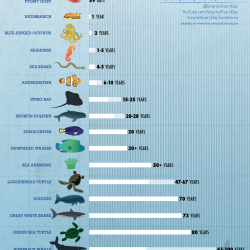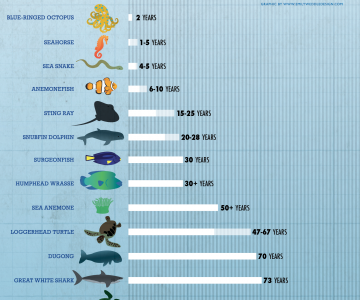What Wildlife Appreciation Experts Don’t Want You To Know

Understanding the intricacies of bird migration is not only fascinating but also essential for conservation efforts. Migration routes and stopover sites are crucial for the survival of migratory bird populations. By conserving these habitats and protecting the resources they depend on, we can ensure the continued existence of these magnificent creatures.
Bird migration is a remarkable phenomenon observed in numerous bird species across the globe. From the Arctic Tern, which travels an astonishing 44,000 miles annually, to the tiny Ruby-throated Hummingbird, which crosses the Gulf of Mexico during its migration, birds display an incredible ability to navigate vast distances with precision.
Bird migration is a testament to the remarkable adaptability and resilience of these winged wonders. As you witness flocks of birds soaring across the sky, take a moment to marvel at the innate navigational abilities, the inherent drive for survival, and the awe-inspiring beauty of avian migration. By understanding and appreciating this remarkable behavior, we can work towards ensuring the continued existence of these incredible creatures and the ecosystems they depend on.
 Understanding the intricate world of chemical signals in the animal kingdom opens a window into a realm of communication that extends beyond our human senses. It highlights the diversity of communication strategies employed by different species, showcasing their adaptability and evolutionary prowess. By unraveling the mysteries of chemical communication, we can gain a deeper Wildlife Appreciation for the fascinating ways in which animals interact and navigate their complex social networks.
Understanding the intricate world of chemical signals in the animal kingdom opens a window into a realm of communication that extends beyond our human senses. It highlights the diversity of communication strategies employed by different species, showcasing their adaptability and evolutionary prowess. By unraveling the mysteries of chemical communication, we can gain a deeper Wildlife Appreciation for the fascinating ways in which animals interact and navigate their complex social networks.
Have you ever wondered why birds migrate? It’s a captivating phenomenon that showcases the incredible abilities and adaptations of these winged creatures. In this article, we will delve into the intricate world of avian migration, exploring the reasons behind this extraordinary behavior.
 One primary motivation for migration is the search for better food resources. As seasons change, the availability of insects, fruits, seeds, and other dietary staples fluctuates. Birds, being highly adaptable creatures, have evolved to follow the abundance of these resources across different regions. By moving to areas where food is plentiful, birds can ensure their survival and reproductive success.
One primary motivation for migration is the search for better food resources. As seasons change, the availability of insects, fruits, seeds, and other dietary staples fluctuates. Birds, being highly adaptable creatures, have evolved to follow the abundance of these resources across different regions. By moving to areas where food is plentiful, birds can ensure their survival and reproductive success.
Similarly, some species rely on specific breeding grounds with optimal conditions for successful reproduction. These birds undertake extensive migrations to reach these breeding sites, often returning to the same location year after year. The Arctic Tern, for instance, nests in the Arctic during the summer, taking advantage of the long daylight hours and abundant food. As winter approaches, they embark on an incredible journey to the Antarctic, where they find favorable conditions for feeding and survival.
In conclusion, the phenomenon of bird migration is a testament to the incredible adaptability and resilience of avian species. By understanding why birds migrate and the mechanisms behind their navigation, we gain a deeper appreciation for the wonders of the natural world. So, next time you spot a flock of birds soaring through the sky, take a moment to marvel at their remarkable journey and the extraordinary behaviors that make avian migration possible.
The study of bird migration has not only provided us with a deeper understanding of avian behavior but also has important implications for conservation. By tracking the movements of migratory birds, scientists can identify key stopover sites, migratory flyways, and potential threats along the birds’ routes. This knowledge is crucial for implementing effective conservation strategies, protecting critical habitats, and ensuring the survival of these incredible travelers.
But how do birds navigate over vast distances with remarkable precision? This question has puzzled scientists for decades. Recent research has uncovered several mechanisms that contribute to their navigational abilities. Birds utilize a combination of celestial cues, landmarks, magnetic fields, and even olfactory senses to navigate their way across continents. For example, some species can detect the Earth’s magnetic field and use it as a compass, while others rely on visual landmarks such as coastlines, rivers, and mountain ranges. The interplay of these navigational tools allows birds to navigate accurately, even when faced with obstacles like storms or unfamiliar landscapes.
One particular aspect of animal behavior that has garnered significant attention from researchers is the phenomenon of animal migration. Migration is a remarkable adaptation that allows animals to travel vast distances in search of food, favorable breeding grounds, or suitable climates. However, as human activities continue to encroach upon natural habitats, migration patterns are being disrupted, posing a significant threat to many species.
The primary reason birds migrate is the availability of food. As seasons change, the availability of resources such as insects, seeds, fruits, and nectar fluctuates. Birds rely on these resources to fuel their energy-intensive activities, such as flying, breeding, and molting. When food becomes scarce in their current location, birds embark on long, arduous journeys to find more abundant feeding grounds.


Ingen kommentarer endnu